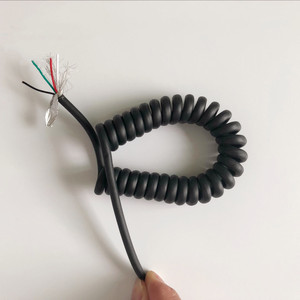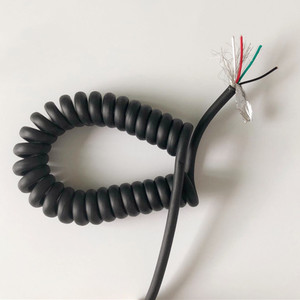(1190 products available)























































































































































































































Spiral cord protectors are flexible and can be used for various applications. They come in different types depending on the usage.
Spiral cord protectors have some essential features that help safeguard cables and cords. They include the following:
The material used to make the spiral protector for cords is the primary concern for many buyers. It should be strong and long-lasting to protect the cable from damage. PVC and rubber are the most popular materials for cord protectors. They are flexible and durable, making it easy to maintain the shape without becoming brittle or cracking. Cord protectors made from PVC or rubber can be used indoors or outdoors. Buyers prefer PVC or rubber cord protectors because they are more reliable than others.
Cable protectors are available in different designs and colors. Some cord protectors have a sleek design, while others have a tube-like appearance. Buyers can find a wide selection of cord protectors to suit their needs. That's why some buyers use cord protectors to organize cables and hide unsightly cords. The color and design of the cord protector can match the decor of the room. Black, white, red, orange, yellow, and other colors are some of the colors of cord protectors available.
A cord protector should be compatible with the cable it is supposed to protect. Some cord protectors can be used with any cable, while others are designed for a specific cable. For instance, iPhone cord protectors are made for iPhone cables. Buyers should check the type of cable the cord protector can accommodate before purchasing it. This can prevent compatibility issues.
Cord protectors are used in different environments. Therefore, they should be able to withstand extreme temperature conditions. PVC and rubber cord protectors can resist low and high temperatures. They won't get damaged or lose their shape when exposed to harsh weather conditions. The temperature resistance of cord protectors makes them suitable for indoor and outdoor use.
Cord protectors are easy to install. Some cord protectors are flexible, so they can be wrapped around the cable. Buyers can also cut the cord protector to fit the required size. These cord protectors are self-wrapping and don't need any adhesive tape. They can also be removed easily without damaging the cord. Spiral cord protectors are easy to take care of. Users can remove them, clean the cord, and then put it back.
Cable protectors are available at different prices. The cost of the cord protector depends on its quality, material, and design. However, most buyers prefer the affordable cord protectors. They are useful for protecting cables from damage. The low cost of the cord protector allows buyers to purchase more than one protector for their cables.
Spiral cord protectors have many applications. They are not limited to only device cords. These protectors are used in many different industries, and their purposes are numerous. Some of their uses are as follows.
When choosing a spiral cord protector, there are a few things to consider. The first is the size of the cords. Be sure to pick a protector that fits the cords to be protected. Next, think about how much flexibility is needed. Some protectors are more flexible than others. If the cords are likely to move around a lot, a more flexible protector is a better choice. Consider the area where the cords will be located. If there is a lot of foot traffic, a heavy-duty protector is necessary. If the cords are just going to be used at a desk, a lighter protector is fine. Also, think about how the protector should be installed. Some can be wrapped around the cords, while others need to be placed on the ends of the cords. Finally, think about the color and design of the protector. It is important to choose a protector that looks good and matches the cords and space where they will be used.
Q1: How to put a spiral protector on a cord?
A1: Putting on a spiral protector is quite simple. First, cut the protector to the required length. Then, carefully wrap the cord or wire with a spiral. Ensure not to stretch the cord while wrapping it with the spiral. If the spiral is stretched, it may contract back, leading to pressure on the cord.
Q2: How to remove a spiral protector from a wire or cable?
A2: Removing a spiral protector is not a hard task. Slice the spiral lengthwise, and then, it will easily come off. Do it carefully to avoid damaging the cord or wire.
Q3: What is the purpose of a spiral protector?
A3: Spiral protectors play a crucial role in protecting wires and cords. That's why they are widely used in different industries. They safeguard the cords and wires against damage caused by friction or abrasion. Spiral protectors also help to keep the cords organized and enhance safety in the workplace. This, in turn, improves productivity.
Q4: How much does a spiral cord protector cost?
A4: The price of a spiral cord protector varies depending on the material, size, and design. PVC and TPR spiral protectors are usually more affordable than silicone spiral protectors. The cost can also differ from one supplier to another. Bulk orders attract discounts, reducing the cost per unit.
Q5: Can a spiral cord protector be used for outdoor cables?
A5: Yes, spiral cord protectors can be used for outdoor cables. However, it is important to choose a protector that is resistant to outdoor elements. UV-resistant spiral protectors are a great option for outdoor cables. They can withstand harsh weather conditions like sunlight and moisture without degrading.